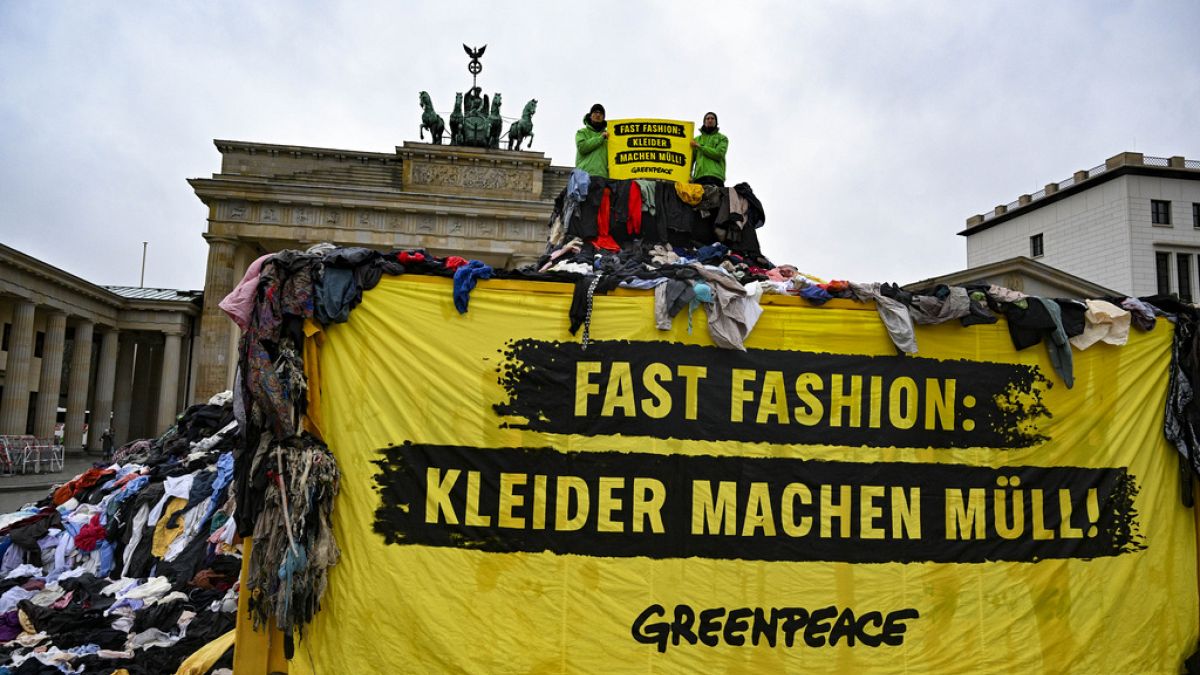Goats destined for meat market now supplying Australian mohair to Italian fashion houses
An academic-turned-farmer in Western Australia who stopped a flock of Angora goats from going to the slaughterhouse hopes to increase the sustainability of the animals through genetic breeding.
The goats, which originated in Turkey and are bred en masse in New Zealand, South Africa and the United States, produce the yarn needed to make mohair, a fabric prized by the fashion house of Europe.
After taking the goats in 2021, Gina Wood launched a selective coupling program she says will make the breed more productive and ethical to farm.
“What we’re trying to achieve with our genetic program is that as the animal ages, its micron [measurement of fibre] doesn’t blow out, it will stay stable,” Dr Wood said.
“You don’t want the animal to just produce good fleece in its first one or two years and then be shipped off to the meat market.
“You want it to have a stable micron over its entire life so that it’s producing that high-quality fleece for eight, nine, 10 years.”
While the fleece quality is comparable to lambs and merino wool, Dr Wood said Angoras were more productive and environmentally friendly.
“They’re actually the most efficient at producing fibre in the entire world,” she said.
“Sheep are heavier on the land and we have fairly fragile soils in WA. The Angora goats are actually lighter on the ground and certainly more so than cattle.”
Dense fleece
Starting with 23 goats in 2021, Dr Wood grew her flock to 120 head in just over two years.
She is now focused on breeding bucks that would produce heavy kids with dense fleeces.
“I want them to grow as fast as possible within the first six months, and then we’re looking for really high stable [fleece] growth rates.
“This year I have animals whose first shearing will be 15 microns, which is quite comparable with lambswool quality.
“I’ve got a six-shearing-animal, which is producing up to 30 microns, which is what you would wear against your skin.”
European demand
Fremantle-based Australian Speciality Fibres director John Bradbury said Australian Angora was highly sought after, but domestic supply was struggling to keep up with international demand, being driven by European fashion houses.
“The quality of the most recent lot we produced, the buyers gave it the same standard as Texas and Cape, that’s South African Cape, which is the highest standard,” he said.
“We ship it off to Italy, it’s washed and then combed, which is paralleling the fibres into a sliver, then we trade it in that form to the fashion mills in Italy.
“You end up with a very clean, nice product, and then that sells for about 35 euros a kilo.”
Mr Bradbury said for the past three years he had sold fleeces at a premium, but with only a handful of flocks producing in WA he was sourcing Angora from across the country to meet the demand.
“We’re buying from all the producers here in WA, plus we’re also buying in New South Wales,” he said.
“It’s a very expensive article, if you compare it to merino wool, the current [merino] indicator is around $11.50 a kilo.
“What we’re hoping is that more [people] go into it and produce more mohair, breed up and get bigger flocks going.”
Get our local newsletter, delivered free each Thursday
Related
Scotland’s biggest landowner is fashion brand billionaire
A European fashion tycoon is the biggest landowner in Scotland—and perhaps even the UK. Danish billionaire Anders Holch Polvsen named the Highlands' richest
EU targets food and fast fashion in new war on…
Polish presidency of the EU Council announced breakthrough in early hours after marathon overnight talks on food waste reduction targets and measures t
Fashion must-haves for your spring semester in Europe
Preparing to study abroad can be incredibly intimidating. With all the emotional turmoil you’ll face in the weeks prior, the last thing you�
Worldview: Ukraine’s Adaptive Fashion for the War Wounded
🇺🇦 Ukrainian Fashion Week presents adaptive clothing for combat injuries. More than 40 fashion brands presented their latest collections at Ukrainian Fash











